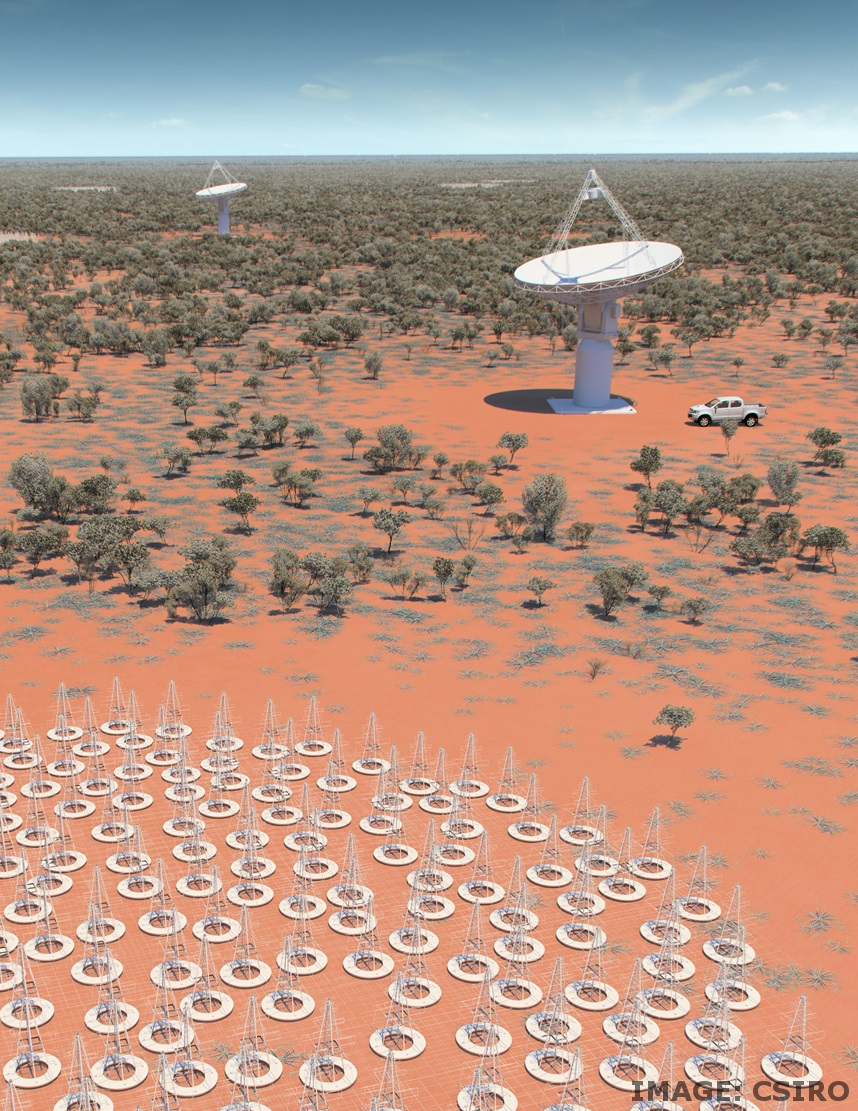Steps taken on SKA quest
 Australian engineers and scientists have designed the local infrastructure for the world’s largest radio telescope – the Square Kilometre Array (SKA).
Australian engineers and scientists have designed the local infrastructure for the world’s largest radio telescope – the Square Kilometre Array (SKA).
The SKA will be able to map the Universe in unprecedented detail, hundreds of times faster than any current facility, using antennas located in both Australia and southern Africa.
The SKA Infrastructure Australia consortium has designed everything from supercomputing facilities, buildings, site monitoring and roads, to the power and data fibre distribution that will be needed to host the instrument at CSIRO's Murchison Radio-astronomy Observatory in remote Western Australia.
The project has presented unique technical challenges.
“We're setting the groundwork to host 132,000 low-frequency SKA antennas in Australia. These will receive staggering amounts of data,” CSIRO's SKA Infrastructure Consortium Director, Antony Schinckel said.
“The data flows will be on the scale of petabits, or a million billion bits, per second – more than the global internet rate today, all flowing into a single building in the Murchison.
“To get this data from the antennas to the telescope's custom supercomputing facilities we need to lay 65,000 fibre optic cables.”
CSIRO and Aurecon engineers drew on their experience working together on the infrastructure design for the Australian SKA Pathfinder telescope, CSIRO's 36-dish radio telescope that is already operating at the Murchison Radio-astronomy Observatory.
Engineers say the design team's biggest challenge was minimising radio noise created by the systems at the high-tech astronomy observatory, which is essential to avoid drowning out the faint signals from space that the telescope is designed to detect.
“Containing the interference created by our own computing and power systems is an unusual construction requirement,” Aurecon's Senior Project Engineer, Shandip Abeywickrema, said.
“We're trying to reduce the level of radio emissions by factors of billions.
“For example, the custom supercomputing building is effectively a fully welded box within a box, with the computing equipment to be located within the inner shield, while support plant equipment will be located in the outer shield.”
Once all the design packages are complete and approved, a critical design review for the entire SKA system will take place ahead of a construction proposal being developed.
Construction is expected to begin in 2020.







 Print
Print